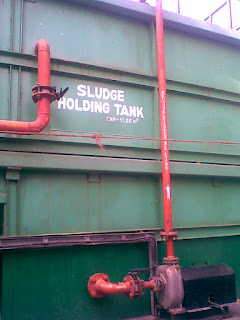ENVO COMPACT MBBR STP
ENVO COMPACT 50
OTHER MODELS
PRICE LIST OF COMPACT STP (SEWAGE TREATMENT PLANT)
Capacity
|
Ex Delhi Cost
|
5 kld
|
Please contact for price
|
10 kld
|
|
25 kld
|
|
30 kld
|
50 kld
|
|
100 kld
|
Note:
1.Variation
from our standard make or standard
design
will vary the cost mentioned.
2.All
Taxes Extra as applicable
3.All
Transportation charges extra as actual.
System description
An introduction to MBBR (moving bed biofilm reactor )/ FM Reactor/ FAB /FMR Reactor wastewater treatment
When communities of microorganisms grow on surfaces, they are called biofilms. Microorganisms in a biofilm wastewater treatment process are more resilient to process disturbances compared to other types of biological treatment processes. Thus, biofilm wastewater treatment technologies can be considerably more robust especially when compared to conventional technologies like activated suldge process..
In the MBBR biofilm technology the biofilm grows protected within engineered plastic carriers, which are carefully designed with high internal surface area. These biofilm carriers are suspended and thoroughly mixed throughout the water phase. With this technology it is possible to handle extremely high loading conditions without any problems of clogging, and treat industrial and municipal wastewater on a relatively small footprint.
System description
The MBBR™ biofilm technology is based on specially designed plastic biofilm carriers or biocarriers that are suspended and in continuous movement within a tank or reactor of specified volume. The design of associated aerators, grids, sieves, spray nozzles and other integral parts to the reactor is also of great importance in making up the system as a whole .
The industrial and municipal wastewater is led to the MBBR™ treatment reactor where biofilm, growing within the internal structures of the biocarriers, degrade the pollutants. These pollutants that need to be removed in order to treat the wastewater are food or substrate for growth of the biofilm. The biocarrier design is critical due to requirements for good mass transfer of substrate and oxygen to the microorganisms . Excess biofilm sloughs off the biocarrier in a natural way .
An aeration grid located at the bottom of the reactor supplies oxygen to the biofilm along with the mixing energy required to keep the biocarriers suspended and completely mix within the reactor.
Treated water flows from reactor through a grid or a sieve, which retains the MBBR™ biocarriers in the reactor. Depending on the wastewater, the reactors are may be equipped with special spray nozzles that prevent excessive foam formation.
The MBBR is a biological aerobic degradation of organic pollutants. The process utilizes millions of tiny, polyethylene biofilm elements that provide a high surface area as a home for a vast, highly active bacteria culture. This fixed film process features a flexible reactor design, the ability to handle load increases without the need for extra tankage, and remains stable under large load variations, including temperature, strength or pH. Like the activated sludge process, the MBBR process utilizes the whole volume of an open tank. Unlike an activated sludge reactor, it does not require sludge return to operate effectively. In MBBR , addition of media quantity and Air Quantity is the Key Factor.
Total reactor volume of the MBBRs is designed for different hydraulic retention time for different types of waste water at average flows and than checked against peak flows. Essentially nutrient levels and DO levels are the only control points for the system.
Moving Bed Biofilm Bioreactor (MBBR) process uses the whole tank volume for biomass growth. It uses simple floating media, which are carriers for attached growth of biofilms. Biofilm carrier movement is caused by the agitation of air bubbles. This compact treatment system is effective in removal of BOD as well as nitrogen and phosphorus while facilitating effective solids separation.
Design and Construction Principles
Neutralised and settled wastewater passes through MBBR for reduction in BOD/COD. Most of the MBBR plants are provided with vertically or horizontally mounted rectangular mesh sieves or cylindrical bar sieves. Biofilm carriers are made up of high density (0.95 g/cm3) polyethelene. These are normally shaped as small cylinders with a cross inside and fins outside. The standard filling of carrier is not more than 465 m2/m3. Generally, design load for COD-BOD removal is 20 g COD / m2d. Smaller carriers need smaller reactor volume at a given loading rate (as g/m2d) when the carrier filling is same.
It is advisable to use MBBR in combination with a DEWATS as a pre-treatment unit, depending on the local conditions and input characteristics. It is a very robust and compact alternative for secondary treatment of municipal wastewater, having removal efficiency for BOD 90 – 95% (low rate) and that of 75 – 80% for high rate. Average nitrogen removal is about 85%. There is no need for sludge recirculation. Phosphorus and faecal coliform reduction is feasible with additional passive (non-mechanical) or active (mechanical) system components.
A constantly operating MBBR does not require backwashing or return sludge flows. It has minimal head-loss. Coarse-bubble aeration in the aeration zone in the wastewater treatment tank provides ease of operation at low-cost. Agitation continuously moves the carrier elements over the surface of the screen thus preventing clogging. Maintenance of MBBR system includes screening, influent equalisation, clarifier system, sludge handling and integrated control system. There is no need to maintain f/M ratio as there is self-maintenance of an optimum level of productive biofilm. Skilled labour is required for routine monitoring and operations of pumps and blowers.




























 The original wastewater treatment system consisted of a chemical pre-treatment system, followed by an anaerobic system, which in turn was followed by an activated sludge process. with high chemical and operating costs
The original wastewater treatment system consisted of a chemical pre-treatment system, followed by an anaerobic system, which in turn was followed by an activated sludge process. with high chemical and operating costs